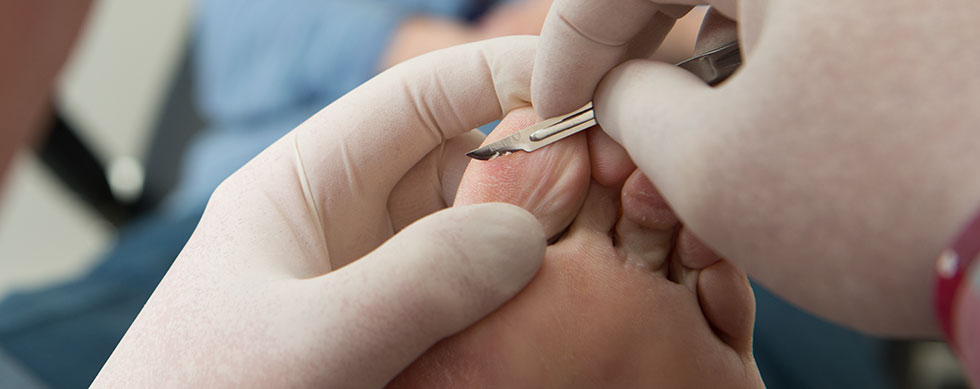Services
Dr. Rajeev Palvia Services

Diabetic foot
A diabetic foot is a foot that exhibits any pathology which results directly from diabetes mellitus or any long-term ("chronic") complication of diabetes mellitus. Presence of several characteristic diabetic foot pathologies such as infection, diabetic foot ulcer and neuropathic osteoarthropathy is called diabetic foot syndrome.
SymptomsRedness can be a sign of infection, especially when surrounding a wound.
Localized warmth can also be a sign of infection or inflammation.
Drainage of pus or persistent bloody drainage is a sign of a potentially serious foot problem.
Fever or chills in association with a wound on the foot of a diabetic person can be a sign of a limb-threatening or life-threatening infection.
Several risk factors increases chances of developing foot problems and diabetic infections in the legs and feet.
Smoking: Tobacco in any form (Cigaratte, Bidi, Gutka etc.) causes damage to the small blood vessels in the feet and legs. This damage can disrupt the healing process and is a major risk factor for infections and amputations. The importance of cessation of smoking cannot be overemphasized.
Athlete's foot: Fungal infection of the skin or toe nails, can lead to serious bacterial infections and should be treated promptly.
Nerve damage: People with long-standing or poorly controlled diabetes are at risk for having damage to the nerves in their feet. The medical term for this is peripheral neuropathy.
Because of the nerve damage, the patient may be unable to feel their feet normally. Also, they may be unable to sense the position of their feet and toes while walking and balancing. They will not notice small cuts and wounds because of decreased sensation in foot.
Poor circulation: Diabetes can lead to accelerated hardening of the arteries or atherosclerosis. When blood flow to injured tissues is poor, healing does not occur properly.
Trauma to the foot: Any trauma to the foot can increase the risk for a more serious problem to develop.
Take Care of your Diabetes
Smoking cessation
Check your feet every day
Be more active
Wash your feet every day.
Keep your skin soft and smooth.
If you can see and reach your toenails, trim them .
Wear shoes and socks at all time .
Protect your feet from extreme heat and cold .
Treatment for diabetic foot problems varies according to the severity of the condition.
Nonsurgical treatment
keeping wounds clean, dry and dressed
close observation of gangrene toes until self-amputation occurs, when the toes fall off due to lack of blood flow
immobilization devices, such as a cast boot or total contact cast
Surgical treatment
surgical stabilization of Charcot's Foot
arterial bypass for peripheral vascular disease, or endovascular surgery with placement of stents
removal of decaying or dead tissue (Debribement)
Frequently Asked Question
Cleaning the wound.
Draining any fluid or pus from the ulcer.
Removing or cutting away dead or infected tissue (called debridement).
Applying special bandages and ointments to absorb extra fluid, protect the wound and help it heal.
Becoming more active can help you control blood sugar levels, feel good, and lighten the load on painful feet and legs, especially if you're overweight.
